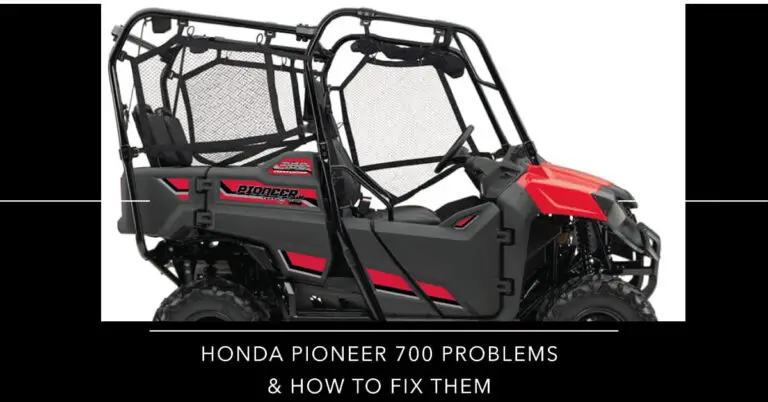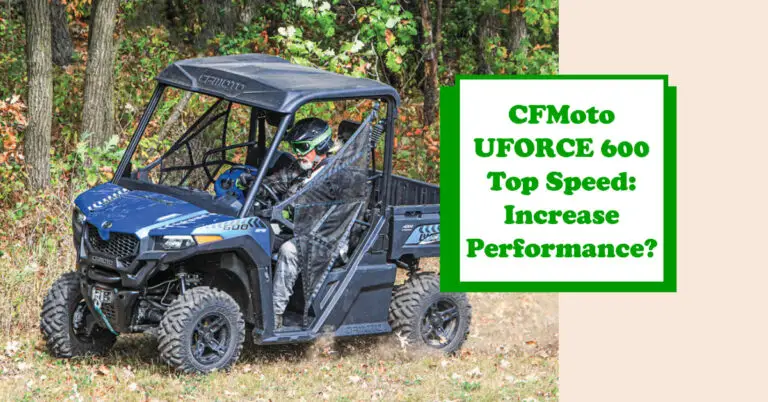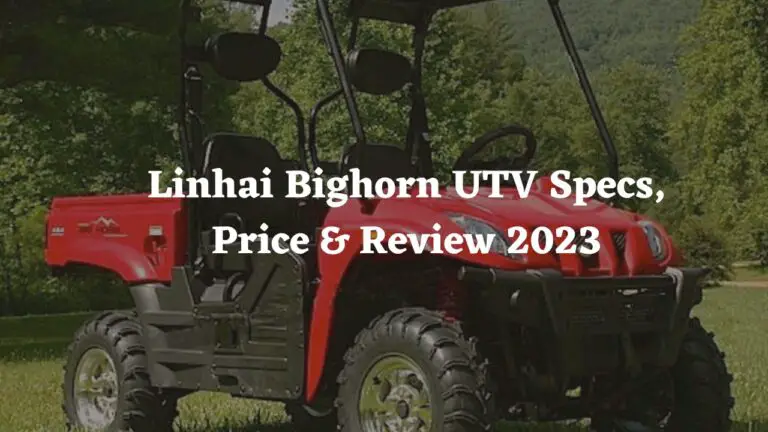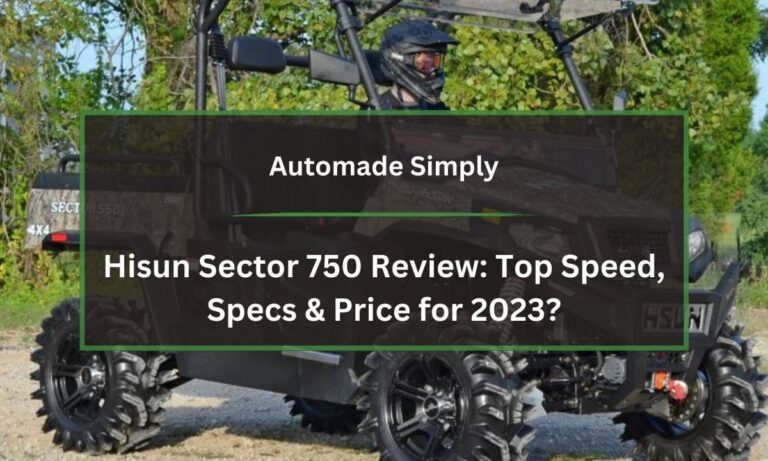Coleman 400 UTV Problems: Troubleshoot Common Issues

Are you having issues with your Coleman 400 utility terrain vehicle (UTV)? Finding your ride won’t start or lacks power can be frustrating. But don’t worry – many Coleman 400 problems can be fixed with some troubleshooting and maintenance.
In this detailed guide, you’ll learn how to diagnose and resolve the most common Coleman 400 UTV problems, including:
- Engine won’t start or is hard to start
- Engine overheating
- Lack of power
- Electrical issues
- Transmission problems
- Brake problems
- Tire and wheel troubles
- Safety and maintenance tips
Following some key troubleshooting steps and inspecting critical components under the hood and chassis can get your Coleman 400 running smoothly again. Let’s dive in!
Table of Contents
Introduction to the Coleman 400 UTV
First, some quick background on the Coleman 400 4×4. This two-seat UTV launched in 2014 as an affordable recreational and utility option compared to pricier models from Polaris, Can-Am, and Honda.
Powered by a single-cylinder 400cc air-cooled engine paired with a centrifugal clutch automatic transmission, the Coleman 400 provides decent pep for trail riding and hauling small loads. Its steel tube frame chassis offers 9 inches of ground clearance to traverse rough terrain.
Standard features include 2WD/4WD selectable drive modes, steel wheels, tilt steering, and a cargo bed that can carry over 500 pounds. While budget-friendly, the Coleman 400 has garnered a reputation for reliability issues that can leave owners stranded.
So how can you get your Coleman 400 running right again when problems pop up?
Engine Won’t Start or Hard to Start
One of the most frustrating issues is getting in the driver’s seat, turning the key, and…nothing. Just the dreaded clicks or whirling noises of a UTV that refuses to fire up. Here are some steps to troubleshoot a no start or hard start situation on your Coleman 400:
- Check battery voltage and connections – Using a voltmeter, ensure your battery is charged to 12+ volts. Inspect the terminals and wires for corrosion or looseness that prevents proper power flow.
- Inspect spark plugs and wires – Remove the spark plugs and check that they are not excessively worn or fouled. Replace plugs every 100 hours. Verify the spark plug wires are undamaged and properly connected.
- Make sure fuel tank has gas and fuel shut off valve is open – It sounds obvious, but verify your Coleman 400 gas tank has fresh fuel. Double check the fuel petcock is open allowing fuel to the carburetor.
- Clean or replace air filter and carburetor – A clogged air filter can restrict airflow causing starting difficulties. Remove the air filter and clean it or install a new one. You may also need to clean the carburetor jets and bowls if gummed up with old gas deposits.
- Check for flooded engine and bad ignition coil – Turn the key to “on”, put the transmission in neutral, and push the throttle wide open for 10-15 seconds to clear any engine flooding. A weak ignition coil can make starting the engine difficult, requiring coil replacement.
- Test battery, starter, and related wiring – Using a multimeter, test the voltage and continuity between the battery, starter motor, solenoid, and wiring to isolate the no start cause.
Following this troubleshooting sequence should get to the bottom of your Coleman 400’s refusal to start and have you riding again. Be methodical and test each component.
Engine Overheating
Another common issue on the Coleman 400 is the engine running hotter than normal, which can lead to catastrophic damage if left unchecked. Here are tips for figuring out the overheating source:
- Check coolant level and look for leaks – Pop open the radiator cap when cool to check the coolant level. Top off if low. Scan hoses, water pump, and radiator for leaks allowing coolant to escape.
- Clean radiator fins and replace water pump – Use compressed air to blow out debris between the radiator fins. A faulty water pump impeller prevents proper coolant circulation causing overheating.
- Replace thermostat and coolant hoses if worn – The thermostat controls coolant flow to the radiator. If stuck closed, coolant can’t return to lower engine temp. Rubber coolant hoses degrade over time and need to be swapped every few years.
- Upgrade to higher capacity radiator – The stock Coleman 400 radiator may not provide sufficient cooling, especially when towing/hauling. An improved aftermarket radiator adds extra cooling capacity.
- Check fan operation – Electric and mechanical fans must activate reliably to suck air through the radiator at low speeds or when stopped.
Don’t ignore overheating or it can warp cylinder heads and blow head gaskets. Get to the root of the problem before permanent engine damage occurs.
Lack of Power
Is your Coleman 400 UTV feeling down on power? Lacking that peppy acceleration and hill climbing ability it once had? Look into these potential causes:
- Clean air filter and replace spark plugs – A restricted air filter reduces engine airflow leading to power loss. New spark plugs ensure peak ignition performance.
- Check for clogged fuel filters and lines – Clogged fuel filters, pinched fuel lines, and stuck carburetor floats prevent proper fuel delivery resulting in power loss.
- Adjust carburetor settings – Lean carburetor settings cause low power. Adjusting the air/fuel mixture and jet sizes optimizes combustion.
- Install performance exhaust and air intake – Open up breathing with a less restrictive performance exhaust and high-flow air filter kit to gain noticeable horsepower.
- Inspect valve clearance – Improper valve lash results in valve timing issues hurting power. Adjusting the valves to spec ensures maximum compression.
- Check for engine compression issues – Do a compression test to determine if worn piston rings or leaking valves reduce engine power. If low, the top end may need rebuilding.
Don’t settle for a sluggish Coleman 400. Dialing in the fuel delivery, ignition, and airflow will restore the zippy performance you want.
Electrical Problems
Like most machines, the Coleman 400 UTV relies on electrical power to run all its systems. Dead battery issues, faulty wiring, and electrical gremlins can quickly sideline your ride. Be prepared to tackle these electrical troubles:
- Inspect battery terminals and ground wiring – Corroded battery terminals and loose ground wires are common causes of electrical failure. Clean terminals and tighten grounds for consistent power flow.
- Check fuses and relays for any blown ones – Flip open the fuse box cover and inspect for burnt out fuses indicating an overloaded circuit. Check for faulty relays that need replacement too.
- Make sure switches and connectors are not corroded – Spray switches and wire connectors with electrical contact cleaner to burn off corrosion interfering with circuits.
- Test stator and regulator rectifier – Use a multimeter to check the stator windings and rectifier diode readings. Replace defective components that are not delivering proper voltage.
Electrical issues can seem mystifying at first. But methodically checking connections, wires, and components will lead you to the fault. Consult the wiring diagram in your service manual as a troubleshooting aid.
Transmission Problems
The automatic centrifugal clutch transmission transfers engine power to the wheels through a belt-driven CVT. Transmission problems threaten your Coleman 400’s drivetrain and mobility. Watch for these trouble signs:
- Check transmission fluid level – Low fluid causes premature belt wear and slippage. Top off the dipstick with recommended CVT fluid if low.
- Inspect drive belt condition and tension – Frayed, cracked, or glazed belts will slip causing poor driveability. Proper belt tension prevents slippage.
- Replace worn shift fork, gears, or bearings – Clunky shifting when changing gears indicates worn components. Split the cases to inspect and replace worn transmission parts.
- Adjust clutch if it’s slipping – The centrifugal clutch may need adjusted if it’s slipping and robbing power. Tighten the clutch spring to engage firmly.
Transmission issues are best addressed promptly before small problems lead to larger failures. Regular fluid changes and inspection helps maximize longevity.
Brake Problems
Reliable brake performance is obviously crucial for controlling your Coleman 400 UTV. Here are brake problems to watch for:
- Check brake pads and rotors for wear – Inspect pad thickness and rotor condition. Worn out pads or warped rotors require replacement for optimum braking.
- Inspect brake lines and master cylinder – Rubber brake lines degrade over time and may leak fluid pressure. The master cylinder seals may also leak, requiring rebuild or replacement.
- Adjust brake pedal free play – Too much pedal free play indicates air in the lines or worn pads. Adjust to proper spec.
- Bleed brakes to remove air in lines – Use a brake bleeder kit to purge any air bubbles in the hydraulic lines that reduce braking power.
Don’t put off brake inspections and service. Properly functioning brakes are the difference between safe stops or accidents. Address issues immediately.
Tire and Wheel Issues
Rugged terrain is no match for a Coleman 400 riding on proper tire pressure and wheels aligned straight. But you may encounter these tire and wheel problems:
- Ensure proper tire pressure – Underinflated tires wear unevenly, affect handling, and are prone to damage. Inflate to recommended PSI for riding conditions.
- Check wheels for damage or wobble – Hits and impacts can bend wheels or damage bearings. Any wobble requires replacement.
- Replace bent or worn tie rod ends – Damaged tie rods cause alignment issues leading to rapid tire wear. Replace bent rods to realign wheels.
- Upgrade to stronger aftermarket wheels – For aggressive riding, upgrade the stock steel wheels to stronger aluminum alloy wheels less prone to dents.
Getting stranded with a flat tire miles from home is no fun. Carry plugs, patches, an air compressor, and spare inner tubes for trailside repairs.
Safety and Maintenance Tips
Beyond troubleshooting specific problems, following prudent safety and maintenance practices makes owning a Coleman 400 much more enjoyable:
- Always wear a helmet and protective gear – Riding gear like goggles, gloves, boots, and a chest protector reduce injury risk if an accident occurs.
- Follow the maintenance schedule – Refer to the owner’s manual maintenance schedule for lubrication, fluid changes, filter replacement, and inspections to keep your Coleman 400 in top shape.
- Check tire tread, brakes, lights regularly – Inspect tires for adequate tread depth and wear. Test brake pedal feel and lights to verify they are working properly before each ride.
- Don’t overload cargo capacity – Overloading the cargo bed risks breakdowns, affects stability, and strains components. Know your payload limits.
- Install protective accessories – Add skid plates, bumpers, guards, and wraps to shield the underside, radiator, and other vulnerable areas from trail damage.
Making safety and preventative maintenance second nature minimizes the likelihood of being stranded trackside when problems arise. Investing in quality riding gear and protective accessories provides peace of mind.
Conclusion
Like any machine, the affordable Coleman 400 UTV is not immune to developing issues. But armed with this troubleshooting guide, you can confidently diagnose and repair common problems to keep your Coleman 400 running optimally season after season.
Pay special attention to engine, drivetrain, electrical, brake, and suspension components that take the most abuse on rough trails. Addressing problems promptly, changing fluids regularly, completing inspections, and making timely repairs will maximize the longevity and reliability of your Coleman 400 for miles of off-road adventure.







